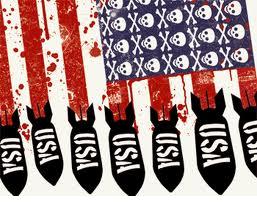U.S. Arms in Persian Gulf: A Profitable Provocation

The United States continues to arm its Persian Gulf allies. About 4,900 high-precision aviation bombs and other shells will be supplied to Saudi Arabia in the near future. The official pretext is the need to bolster a coalition to counter the spread of Iranian influence in the region.
The upcoming arms deal is yet another attempt by the Barack Obama Administration to prevent Iran from becoming the regional center of gravity. Aware that the U.S. troop withdrawal from Iraq by the end of the year may considerably strengthen Tehran’s positions, Washington is seeking to curb Iranian influence in the Gulf. Boris Dolgov, an expert at the Institute of Oriental Studies, comments on the issue.
“Persian Gulf nations, especially member states of the Cooperation Council for the Arab States of the Gulf, are sailing in the U.S. policy waterway. Their aims with respect to Iran are very similar to those of the United States. Washington sees Iran as one of the key elements of the “axis of evil”, a concept that was formulated under President Bush. The Gulf nations have stood in opposition to Iran ever since the Islamic Iranian Revolution Tehran planned to export to those nations.”
Life has shown, however, that U.S. efforts to equip Gulf armies with modern weapons has failed to make Tehran bite its tongue or scale down its ambitions. Even the U.S. regional missile defense system, which is currently being deployed to shield U.S. allies from Iranian ballistic missiles, seems to have had little effect on Iran.
After the International Atomic Energy Agency published its latest report on the Iranian nuclear program, claiming that Iran could be designing a nuclear bomb, Israel and the West have pushed for a tougher stance toward the Islamic Republic. But Russia and China supported by other countries think that additional sanctions, let alone military strikes, would be unacceptable. Given the above circumstances, U.S. arms supplies to the Gulf look like a provocation, to say the least, Sergei Druzhilovsky, a professor of the Moscow State Institute of International Relations, told the Voice of Russia.
“Clearly, the aim is to provoke Iran to respond by some irrational moves, which would enable the Americans to justify the subsequent violence and the use of military force. Because no further arming of the U.S. allies in the Arab Middle East would make them any stronger. It’s not the strength of its allies, which simply doesn’t exist, but its own military bases in Saudi Arabia, Kuwait and Bahrain and its own fleet in the Persian Gulf that Washington relies upon. So, this is a pure provocation.”
For the United States this is also a nice way of battling the economic recession. The Pentagon has supplied $60 billion worth of weapons and hardware, including F-15 fighter jets, to Saudi Arabia in recent months and is planning to sell $1.25 billion worth of anti-aircraft missiles to Oman. To sum up, the alleged Iranian threat is doing the U.S. economy a good favor.
Stop NATO e-mail list home page with archives and search engine:
http://groups.yahoo.com/group/stopnato/messages
Stop NATO website and articles:
http://rickrozoff.wordpress.com
To subscribe for individual e-mails or the daily digest, unsubscribe, and otherwise change subscription status:
[email protected]

